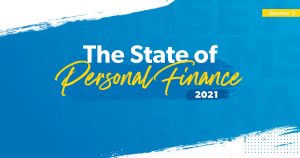Johner Images/Getty Images
Key takeaways
- Cash back credit cards offer a straightforward way to earn rewards on your spending.
- Flat-rate cards offer a fixed percentage back on all purchases, while bonus category cards offer higher cash back rates in specific categories.
- Bonus category cards may require activation and come with spending caps, so it’s important to understand your spending habits before choosing one.
The best cash back credit cards offer a convenient way to earn rewards on your everyday spending. But cash back credit cards aren’t all the same. You’ll find a variety of reward structures, welcome bonuses, card benefits and redemption options.
The right cash back card for your needs depends on your spending habits. Learn about the two main types of cash back cards — flat-rate cash back cards and bonus category cash back cards — and which ones are favorites among our Bankrate experts.
Flat-rate cash back credit cards
Flat-rate cash back cards offer a fixed percentage back on all your purchases, regardless of what you buy or where you buy it. Many flat-rate cards offer a cash back rate of 1 percent to 1.5 percent, but the best flat-rate cards give you 2 percent back. That means you’ll earn $2 in rewards for every $100 you spend on your card.
Pros and cons of flat-rate cash back cards
Pros
- They offer a hassle-free approach to cash back. Flat-rate cash back credit cards are simple. You don’t have to use these cards for certain purchases to maximize your cash back, because every purchase earns the same rewards.
- Every purchase is eligible for cash back. Your cup of coffee this morning, those new tires or the amusement park trip your kids have been begging for can all earn cash back.
- They typically have no category spending cap. Cards with bonus categories usually cap the rewards rate once you hit a certain spending threshold. Spending caps are much less common on flat-rate cards.
Cons
- Reward rates typically don’t exceed 2 percent. Most flat-rate credit cards offer 1 percent to 1.5 percent cash back, but you may find a card with 2 percent cash back. Bonus category cards tend to offer higher rewards rates on certain spending categories.
- Cash back rewards aren’t flexible. For people who try to maximize their rewards, a flat-rate card might not be the right fit. They offer limited flexibility in terms of earning potential.
- These cards typically offer minimal benefits. Flat-rate cash back cards usually don’t offer many extra perks and benefits. But they do usually come with no annual fees.
Who should get a flat-rate card?
Flat-rate cards are simple. Because every purchase earns the same rewards, a flat-rate card is a great companion if you want to swipe one card for all purchases.
With a flat-rate cash back card, you don’t have to keep track of different rewards categories or remember to activate bonus categories. It can also be a good card if you mainly spend on things that aren’t typically covered by bonus categories, like bills and utility payments.
But what do our experts think about these kinds of cards? Among nine Bankrate credit card experts polled for this article, seven have a flat-rate card in their wallet.
John Puterbaugh, a Bankrate senior director, says he makes good use of his Fidelity® Rewards Visa Signature® Credit Card*. He earns 2 percent cash back on every purchase, and those rewards go straight into his Fidelity IRA.
“[My Fidelity card] isn’t as flashy or exciting as my Chase cards that are great for putting points toward travel and vacation,” Puterbaugh says. “But I’ve been trying to use it more and more because its 2 percent flat rate is better than my Chase Freedom Unlimited® card’s standard rate.”
Bonus category cash back credit cards
Bonus category cash back cards offer higher cash back rates in specific purchase categories — like restaurants, gas stations or travel — and lower flat rates, usually 1 percent back, on other purchases.
Some bonus cash back cards have rotating cash back categories that change quarterly or monthly. Others use a tiered rewards structure based on spending categories. Some cards may allow you to choose your own bonus spending categories or automatically offer bonus cash back on your biggest eligible spending category for the month.
Keep in mind: Bonus categories are usually capped, with the cash back rate dropping to 1 percent after you hit the spending threshold quarterly or annually. There may be activation requirements to earn those rotating cash back rewards, too.
For example, the Discover it® Cash Back and Chase Freedom Flex℠* require you to activate the bonus categories each quarter to earn the boosted rate. Both cards offer 5 percent cash back (activation required) on rotating categories each quarter. After $1,500 in purchases, the rewards rate drops to 1 percent cash back.
Pros and cons of bonus category cash back cards
Pros
- They provide a higher cash back rewards rate. Bonus category cards offer a higher rewards rate in certain purchase categories. These categories may change quarterly, offering up to 5 percent back. If you maximize bonus category spending, you can earn substantial rewards.
- You’ll see a variety of cash back categories. Bonus category cards allow you to earn a boosted rate in a number of categories like retail stores, streaming services and gyms. You can align your spending habits with the card to maximize rewards.
- They encourage a hands-on approach. Bonus category cards require some strategy to maximize their rewards. This might help you keep a close eye on your budget and spending.
Cons
- They might have a category spending cap. While it varies from card to card, some bonus categories drop to a 1 percent rewards rate once you hit a certain spending threshold.
- Maximizing takes planning. Bonus categories may change quarterly, so it can be tricky to maximize rewards without planning your purchases in advance. If you don’t earn on a bonus category, you may only earn 1 percent on other purchases.
- Quarterly activations are sometimes required. Some cards require you to activate your bonus categories each quarter. If you forget, you won’t get the boosted rate.
Who should get a bonus category card?
Bonus — and rotating — category cash back cards offer more earning potential than flat-rate cash back cards, but they’re not for everyone. To make the most of these cards, take a look at your spending habits. If you like to track your spending and strategize which card you use for different purchases, a bonus category card could be a good fit.
If you’re considering a card with rotating bonus categories, ask yourself:
- What do I spend the most money on? Look for a card that offers the highest cash back rate in that spending category.
- Will I remember to activate the categories each quarter? The activation process is usually simple, but some people prefer a more hands-off approach.
- Will I spend more than the threshold in the bonus categories? If so, consider whether you have another card to spend in that category and earn rewards until the next cycle.
Among the same nine Bankrate credit card experts, seven use a bonus category card.
“I tailor cards to my spending while staying true to my motto — max value at minimal effort,” says Ana Staples, a Bankrate lead writer. She’s a fan of the Capital One SavorOne Cash Rewards Credit Card, which complements her travel rewards card.
Ryan Flanigan, a Bankrate writer, says his cash back card pick is the Chase Freedom Flex. “Chase points are so valuable for my travel needs, and I feel like I can never have enough,” he says. “The 5 percent categories are always useful for me, and the ongoing bonus categories are great. If I wanted to be a one-card-only guy, that would be the card I picked.”
The bottom line
Choosing a cash back card comes down to what you want out of your card. If you prefer to earn cash back without the hassle of tracking category bonuses or juggling multiple credit cards, a flat-rate card is probably a good choice.
But if you want to maximize your cash back, a single credit card may not be enough. By using one or more bonus category cash back cards for your major spending and using a high-earning flat rate card for the rest, you can get the most bang for your buck.
*Information about the Fidelity® Rewards Visa Signature® Credit Card and the Chase Freedom Flex℠ has been collected independently by Bankrate. Card details have not been reviewed or approved by the card issuer.
Read the full article here
















